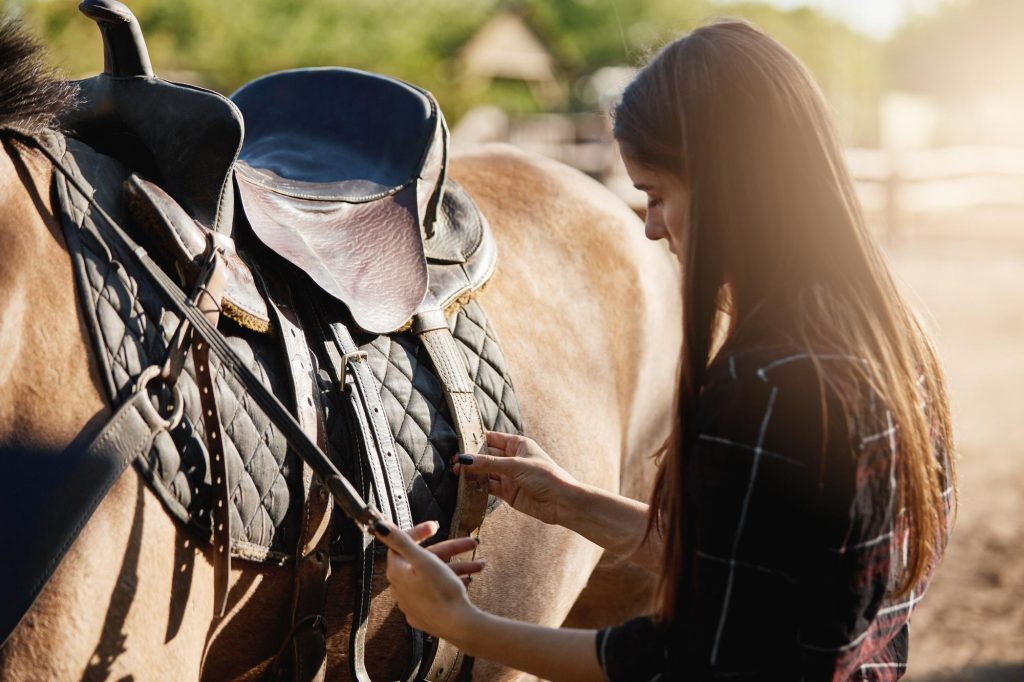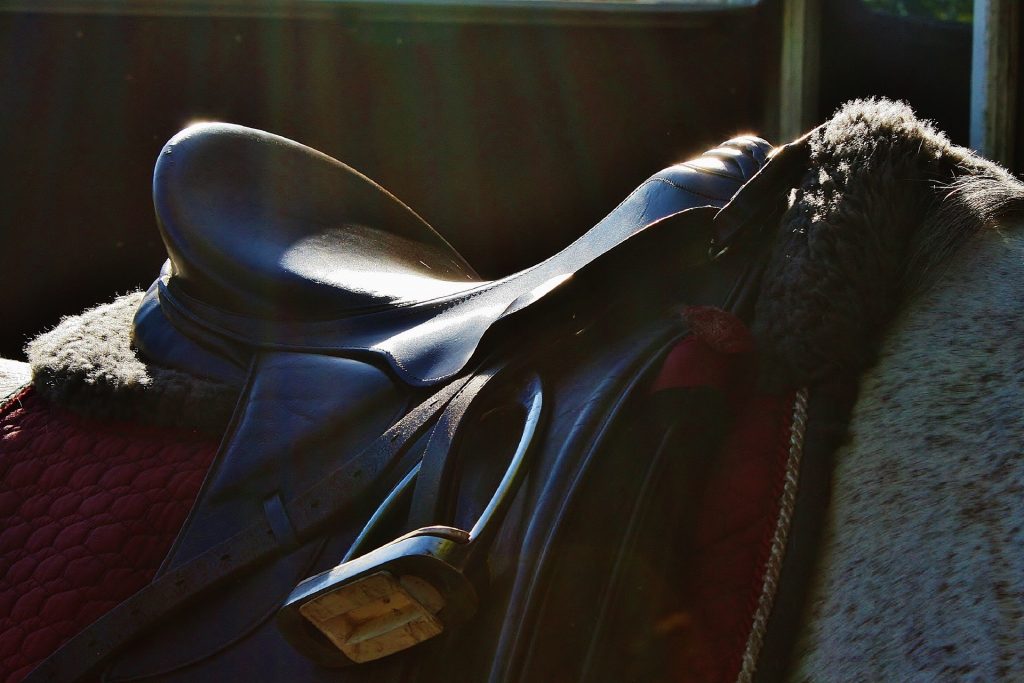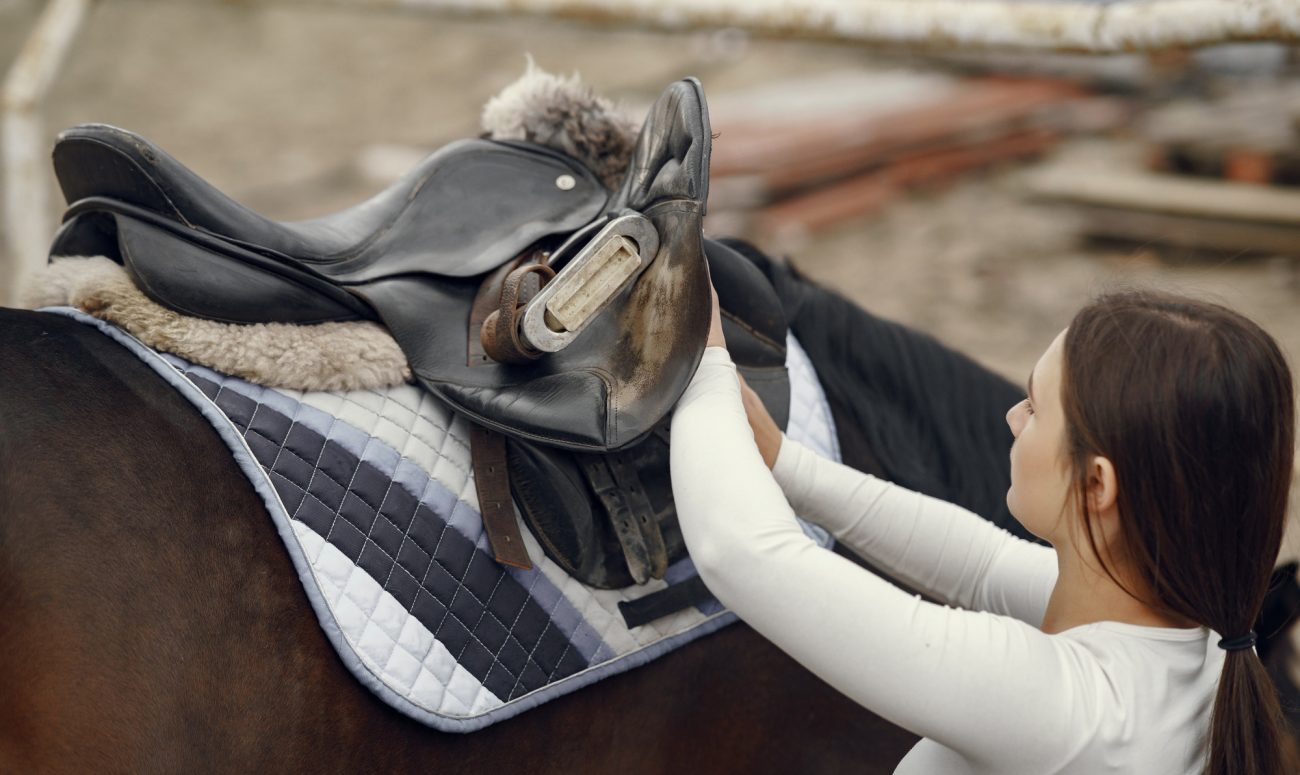If you’ve never saddled a horse before, you may be confused as to how to do it. Yet, knowing how to saddle a horse properly is a crucial skill when it comes to riding horses. There are a few basic steps involved, which many riders don’t understand. Here’s a quick guide to help you get started. First of all, approach the animal from the horse’s left and prepare it.
Placing the saddle on the horse
Before you start putting the saddle on the horse, make sure the animal is clean. First, brush its coat with a curry comb to remove dirt and tangles. You also need to inspect it for sores. Check the saddle to make sure it does not aggravate any sores. Next, put a saddle pad over the horse’s back. It will keep the saddle in place and protect the horse’s skin. The stirrup irons should be pushed up to the top of the stirrup leathers. In this way, they stay in place while you lift the saddle. Approach the horse from the left hand side and gently put the saddle on the horse’s body.
Make sure the girth strap fits snugly around the horse. There are three straps on the girth; you should use only the outer ones. Use the third one only if the outer two fail to fit correctly. Tighten the straps under your horse’s belly. Make sure not to overtighten them as it may affect the horse’s breathing – the saddle should fit snugly behind the horse’s shoulder blades and sit slightly behind its withers. If it’s a western saddle with a saddle horn, tighten the back cinch slowly and securely before mounting. Make sure the saddle is tight enough to allow for shoulder movement.
Western saddle

Approach the horse from its left side. With western saddles, saddle pads are often substituted by saddle blankets. Start with placing a saddle blanket on the horse’s back. To properly place a saddle pad, put it a few inches ahead of the horse’s withers and at the base of the horse’s neck. Then, place the western saddle gently on the top of the animal. Attach the girth strap to the saddle and fasten it. The next step is securing the saddle with the cinch. Before you can tie the front (main) cinch of the western saddle, reach underneath the horse and grab a piece of latigo strap. Slide the leather latigo through the cinch buckle and push it through the saddle’s D-ring. Try not to twist the leather latigo as you go.
Once you’ve secured the latigo, you’re ready to tighten the front (main) cinch. To do this, slide the tongue of the cinch buckle into the latigo’s D-ring from the right side. Insert the tail into the loop created by the D-ring and pull the latigo upward. Gradually tighten the cinch and allow the horse to get used to the western saddle. You can also walk the horse forward for a better fit. Make sure to check the cinch again before mounting your horse.
Western saddles – cinches
There are two basic types of cinches: the straight and contoured cinches. A straight cinch hugging the horse’s belly is the most common type. A roper cinch made of mohair provides extra belly support, while a contoured cinch has a cut-back design that improves the horse’s freedom of movement and flexibility.
The front cinch (or rear cinch) is secured on the back of the saddle with two D-rings. The strap should be tight enough to keep the saddle from moving, but loose enough to fit a flat hand between the cinch and horse’s body. To loosen the cinch, pull up on the outside layer of the strap between the saddle’s D-ring and the cinch rings.
English saddle

English saddles, just like the western ones, cannot be put on the animal without cleaning it thoroughly, especially in the girth area. For this purpose, use a curry comb and a soft brush to remove any dirt or loose hair. Then, put a saddle pad on the horse’s back. Most horses are comfortable with being saddled from the left side. While standing by the horse’s left shoulder, lift the saddle and place it on the saddle pad. Buckle the girth strap and pull down the stirrups. A few minutes after mounting the horse, check the girth again.
Ensuring a proper fit
One of the most important things you can do before you put a saddle on your horse is to check its fit. The saddle should be comfortable, yet not overly snug. Saddles shouldn’t press against the horse’s spine and they should never press against the horse’s withers. When you’re unsure about the fit, you can use other methods, such as examining your horse’s sweat marks. Sweat circles indicate an improper saddle fit. White marks, swelling and soreness are all signs of improper saddle fitting.
If your horse feels uncomfortable in a saddle, it may swish its tail or flatten the ears. Even if the animal doesn’t show signs of discomfort, a saddle that is too tight may pinch the muscles in the horse’s back or shoulders. Saddles that are too tight can cause back sores and even be the cause of serious problems.
